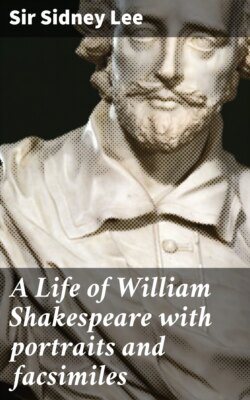Читать книгу A Life of William Shakespeare with portraits and facsimiles - Sir Sidney Lee - Страница 57
На сайте Литреса книга снята с продажи.
Divided authorship of ‘Henry VI.’
ОглавлениеTable of Contents
The first of the three plays dealing with the reign of Henry VI was originally published in the collected edition of Shakespeare’s works; the second and third plays were previously printed in a form very different from that which they subsequently assumed when they followed the first part in the folio. Criticism has proved beyond doubt that in these plays Shakespeare did no more than add, revise, and correct other men’s work. In ‘The First Part of Henry VI’ the scene in the Temple Gardens, where white and red roses are plucked as emblems by the rival political parties (act ii. sc. iv.), the dying speech of Mortimer, and perhaps the wooing of Margaret by Suffolk, alone bear the impress of his style. A play dealing with the second part of Henry VI’s reign was published anonymously from a rough stage copy in 1594, with the title ‘The first part of the Contention betwixt the two famous houses of Yorke and Lancaster.’ A play dealing with the third part was published with greater care next year under the title ‘The True Tragedie of Richard, Duke of Yorke, and the death of good King Henry the Sixt, as it was sundrie times acted by the Earl of Pembroke his servants.’ In both these plays Shakespeare’s revising hand can be traced. The humours of Jack Cade in ‘The Contention’ can owe their savour to him alone. After he had hastily revised the original drafts of the three pieces, perhaps with another’s aid, they were put on the stage in 1592, the first two parts by his own company (Lord Strange’s men), and the third, under some exceptional arrangement, by Lord Pembroke’s men. But Shakespeare was not content to leave them thus. Within a brief interval, possibly for a revival, he undertook a more thorough revision, still in conjunction with another writer. ‘The First Part of The Contention’ was thoroughly overhauled, and was converted into what was entitled in the folio ‘The Second Part of Henry VI;’ there more than half the lines are new. ‘The True Tragedie,’ which became ‘The Third Part of Henry VI,’ was less drastically handled; two-thirds of it was left practically untouched; only a third was thoroughly remodelled. [60]
